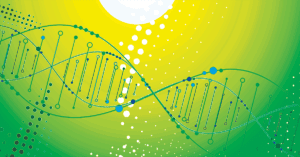

Try out Terra’s updated Interactive Analysis interface
The new interface design aims to provide a more consistent and intuitive experience for using Jupyter Notebooks, RStudio, Galaxy and future interactive analysis applications in Terra.


The new interface design aims to provide a more consistent and intuitive experience for using Jupyter Notebooks, RStudio, Galaxy and future interactive analysis applications in Terra.


The new Scientific Usability Engineering team will focus on fulfilling feature requests and addressing pain points reported by Terra users.


This spotlight on the paper describing the Telomere-to-Telomere genome reference highlights how the variant calling part of the work was implemented in Terra.


A totally rigorous analysis of the trajectory of startled cats, featuring fully reproducible catterplots.


Adam Nichols of the Terra Batch Workflows team takes us on a tour of the inner workings of the workflow execution system, highlighting recent improvements.


Discover recent improvements to Terra workspaces that protect your work from accidental changes and give you more flexibility and control over how your data tables are displayed.


A review of data, code and tools available for reuse in Terra, inspired by “Ten simple rules for large-scale data processing” (Fungtammasan 2022)


New Terra features give you greater control over data storage and computing resources by exposing the regional architecture of the Google Cloud Platform in key parts of Terra.


This spotlight on a peer-reviewed paper about the 2021 Delta variant outbreak in Provincetown, MA highlights how the viral genomics part of the work was implemented in Terra.


Designed to provide federated access to viral genomic data, the Viral AI network will use Terra to provide user-friendly access to relevant analysis capabilities.
Terra is developed by the Broad Institute of MIT and Harvard in collaboration with Microsoft and Verily.





